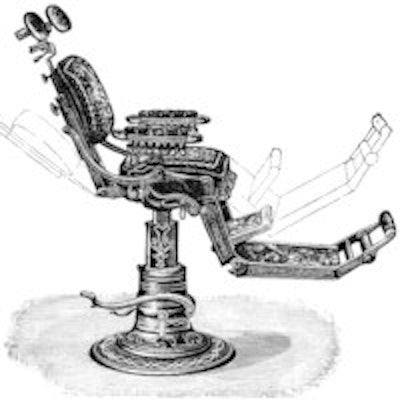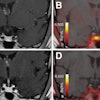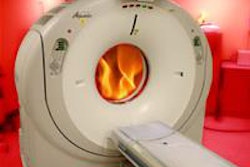
Every healthcare facility or authority should have a plan for upgrading or renewing imaging equipment, and the plan should look forward at least five years and be updated annually, according to a statement issued on 18 September by the European Society of Radiology (ESR).
"Equipment older than 10 years is no longer state-of-the art equipment and replacement is essential," noted members of the ESR Working Group on Economics, who wrote the report. "Operating costs of older equipment will be high when compared with new equipment, and sometimes maintenance will be impossible if no spare parts are available."
Furthermore, older equipment has a high risk of failure and breakdown, causing delays in diagnosis and treatment of the patient and safety problems both for the patient and the medical staff. Also, technical or functional obsolescence may reduce the functionality of equipment, they stated. ESR is promoting the use of up-to-date equipment in the context of the EuroSafe Imaging Campaign, because using suitable equipment will improve quality and safety, according to the document, which was posted online by Insights into Imaging.
In 2013, the Canadian Association of Radiologists endorsed rules on the life cycle of various types of equipment based on their utilization, which is categorized into three categories (high, mid, and low) on the basis of number of examinations per year, as shown in the table.
| Medical imaging equipment
life expectancy guidance (utilization and age related) |
||||
| Device type (analogue or digital) |
Device life expectancy based on utilization: High-Mid-Low* | Utilization based on exams/year | ||
| High | Mid | Low | ||
| Radiography, general | 10-12-14 | > 20,000 | 10,000-20,000 | < 10,000 |
| Radiography, mobile | 10-12-14 | > 6,000 | 3,000-6,000 | < 3,000 |
| R/F fluoroscopy (conventional/remote) | 8-10-12 | > 4,000 | 2,000-4,000 | < 2,000 |
| R/F interventional integrated c-arm | 8-10-12 | > 4,000 | 2,000-4,000 | < 2,000 |
| R/F urology | 8-10-12 | > 1,500 | 750-1,500 | < 750 |
| Mobile C-arm (all types including O-arms) |
8-10-12 | > 2,000 | 1,000-2,000 | < 1,000 |
| Angiography (1/2 plane)/interventional | 8-10-12 | > 4,000 | 2,000-4,000 | < 2,000 |
| Cardiac suite (single/biplane) | 8-10-12 | > 3,000 | 1,500-3,000 | < 1,500 |
| CT scanner | 8-10-12 | > 15,000 | 7,500-15,000 | < 7,500 |
| MRI scanner | 8-10-12 | > 8,000 | 4,000-8,000 | < 4,000 |
| Ultrasound | 7-8-9 | > 4,000 | 2,000-4,000 | < 2,000 |
| PET/CT | 8-10-12 | > 4,000 | 2,000-4,000 | < 2,000 |
| Mammography | 8-9-10 | > 7,000 | 3,500-7,000 | < 3,500 |
In the table, an examination is a defined technical investigation using an imaging modality to study a body structure, system, or anatomical area that yields one or more views for diagnostic and/or therapeutic purposes. Exceptions include routinely ordered multiple body structures that by common practice or protocol are counted as one exam.
Hence, the examination of one body region without and with contrast medium counts as one exam, and the number of exams increases accordingly when two or more body regions are examined. The figures for cardiac suite and angiographic procedures do not specify the ratio of diagnostic versus interventional procedures.
Equipment up to five years old reflects the current state of technology and offers opportunities for economically reasonable upgrade measures, while equipment that's between six and 10 years old is still fit to use if properly maintained, but already requires replacement strategies to be developed, wrote the authors. At least 60% of installed equipment in radiology departments should be up to five years old, and up to 30% should be 6-10 years old, whereas not more than 10% of equipment should be older than 10 years.
Cardiac CT is a typical example of the evolution towards lower radiation exposure levels, while improving lesion conspicuity; the newest technology offers 10% to 30% the radiation exposure levels of systems five years ago, they explained.
"Technological advances render some equipment obsolete, or require software and hardware upgrades to keep the existing equipment in the state-of-art status or simply in a satisfactory status for a certain period of time. But after a certain age, upgrade and even repair become impossible. Therefore equipment becomes progressively under-used and discarded, serving at best as a source for spare parts," the authors stated. "Another limit of old equipment is its inability to be included in an up-to-date communicating environment which requires a performing electronic infrastructure. Examples are telemaintenance, teleradiology, patient identity propagation, and connection with the electronic patient record."
Radiologists' involvement
Local decisions rely on a combination of multiple criteria: age, breakdowns, and availability rate, operational costs, repair possibilities, medical benefit of the technology, functionality as regards the clinical requirements, image quality, safety (radiation), risk of claims, regulatory obligations, equipment efficiency (ergonomics, patient throughput), and strategic factors such as attractiveness for employees and patients.
Radiologists and biomedical engineers should control image quality and raise alarm bells when appropriate care of patients is no longer offered, they pointed out. In parallel, users should prospectively gather precise data on equipment malfunction (number of hours of partial or total failure) and try to estimate its consequences (appointment delays, underemployment of human resources).
Health policies in some countries have set up different incentives, leading to equipment quality improvement and transparency toward both requesters and patients. Examples of such measures include:
- Regulatory obligation of specific mentions in the medical report about the type and age of the equipment used, and the radiation dose for technologies using x-ray, all these data being indirect information to assess the quality of the examination
- Regulatory obligations to measure and optimize the radiation dose
- Quality control of the equipment (security, image, radiation)
- Reimbursement models on fees for exam, taking into account the level of performance of the equipment, its age, and possible upgrade
However, specific regulations in different European countries vary or sometimes do not exist at all, according to the ESR statement.
Moreover, specific data about economic figures are lacking, but undoubtedly many departments have a considerable proportion of equipment in use that is in need of immediate replacement, the authors continued. Studies have shown that the lifetime of medical equipment will be prolonged by up to 50% if it is not utilized often, compared with institutions with high utilization rates of the equipment. Also, if maintenance is ignored, equipment lifetime will be shortened by up to 50%. Another consideration will be the changes in medical practice that will affect the need for some types of imaging.
Within an environment where decisions are mainly driven by financial considerations, business models should include the global cost for running equipment and not purely the acquisition cost. Decisions should intelligently take into consideration not only immediate results but also the cost of poor quality, errors, and diagnostic delays, they concluded.
The ESR Working Group on Economics comprises Boris Brkljačić, Mustafa Özmen, Peter Mildenberger, Elizabeth Schouman-Claeys, Deniz Akata, and Andrea Giovagnoni.
For more details on the statement, click here.



















